Chocolate is toxic to cats, so they should't eat it. While most pet owners are more concerned about their dog eating chocolate (dogs account for about 95% of chocolate consumption calls to pet poison hotlines), it's just as important that you prevent chocolate ingestion in your cat. Even a small amount of chocolate can be bad for cats, and can cause symptoms ranging from vomiting to seizures and even death. Knowing what can happen and what to do when cat and chocolate combine can save a life.
Why Is Chocolate Bad for Cats?
That's mainly because chocolate contains ingredients called theobromine and caffeine, which are toxic to cats if consumed in large enough quantities. Cats absorb theobromine much more slowly than humans, so even a small amount of chocolate can be toxic to a small cat. Caffeine is chemically similar to theobromine and stimulates a cat much more than a human because cats are much more sensitive to it.
Chocolate toxicity in cats can cause various signs, including death, if a cat is not treated promptly. Each cat has different sensitivity levels to theobromine and caffeine, so if your cat has eaten chocolate, contact your veterinarian immediately, even if you don't think the kitty ingested very much.
Because cats are more sensitive to the components of chocolate than we are, you'll see obvious signs if a cat eats even a small amount. Initially, vomiting and diarrhea can occur along with hyperactivity. If untreated, your can may experience increased thirst, restlessness, and tremors. If you cat ingests a relatively large amount of chocolate, they may have seizures, experience stiffness, rapid breathing. They may even die without quick veterinary treatment.
How Much Chocolate Is Bad for Cats?
| Type of Chocolate | Minimum Amount That Can Be Toxic to an 8 lb. Cat |
|---|---|
| Milk | 1.14 oz (or 32.3 g) |
| Dark | 0.5 oz (or 14.2 g) |
| Semisweet | 0.5 oz (or 14.2 g) |
| Baking | 0.2 oz (or 5.7 g) |
| White | Not a concern |
The toxic dose of theobromine in cats is 200 milligrams per kilogram, but different types of chocolate contain different amounts of theobromine. Baking, semi-sweet, and dark chocolates pose a greater risk to a cat than milk chocolate. White chocolate is not a concern for theobromine and caffeine toxicity because it doesn't contain cocoa solids like other types of chocolate. White chocolate has extremely low levels of the chemicals needed to produce toxic effects in a cat.
Baking chocolate is not sweet, usually comes in large bars or 4-ounce chunks, and is mainly used as an ingredient. An 8-pound cat only needs to bite off 0.2 ounces of baking chocolate for it to be dangerous. Cats need to ingest slightly more if the chocolate is semisweet or dark, but it still only takes 0.5 ounces for a cat to consume a toxic amount. Milk chocolate contains far less theobromine and caffeine than the more dangerous chocolate varieties, so a cat has to eat just over 1.1 ounces to ingest a toxic level.
Treatment of Chocolate Toxicity in Cats
If your cat is at risk for chocolate poisoning, then your veterinarian may induce vomiting to empty their stomach content. This is not something you can safely do at home.
Warning
Do not use hydrogen peroxide to make your cat vomit at home. Although this was once common advice, it's now known that ingesting hydrogen peroxide can cause serious gastrointestinal injury to cats. Instead, bring your cat to your vet (or the nearest open vet facility) as soon as possible.
Once at your veterinarian's clinic, your cat may need fluid therapy to stay hydrated along with blood or urine tests. An ECG may also be performed to look for abnormal rhythms of the heart. Vets will treat your cat's signs as needed, and your kitty will probably eat a bland diet for the next few days. Death is possible if your cat eats too much theobromine and doesn't get treatment quickly enough.
Related Article

Understanding Cat Tail Talk
Feline communication is a complex system of sign language, some vocalization, and even scent cues p
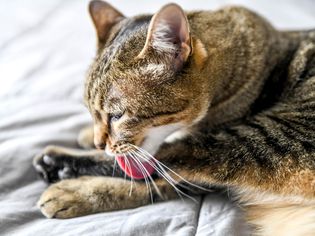
Reasons Why Your Cat is Overgrooming and How to Stop It
Your cat overgrooming may be for medical reasons or behavioral reasons; she may be nursing a wound
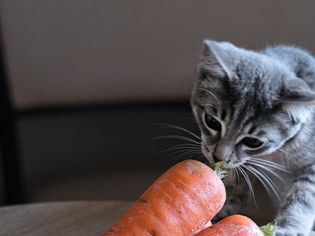
Can Cats Eat Carrots? How to Safely Feed This Vegetable To Your Feline
Pet parents looking to give their cats the occasional veggie treat may wonder if cats can eat carro
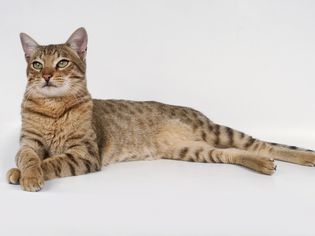
What Happens When a Cat is Spayed?
Ovariohysterectomy, also known as a "spay", is the surgical removal of a female cat's ovaries and u
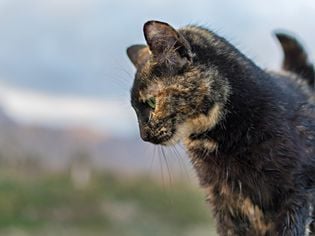
How to Treat Feline Leukemia
Any cat can contract feline leukemia by being exposed to the virus that causes it. It is easily spr
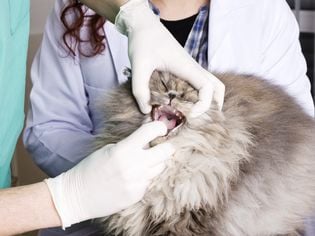
Bad Breath and Drooling in Cats
It's normal for cats to have occasional bad breath and drooling, but it can sometimes signif
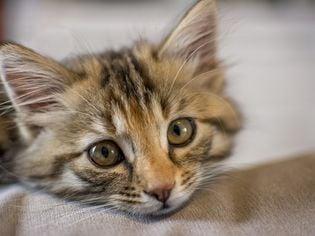
Feline Cerebellar Hypoplasia
Feline cerebellar hypoplasia is a neurological disorder that occurs when a cat's brain does not dev
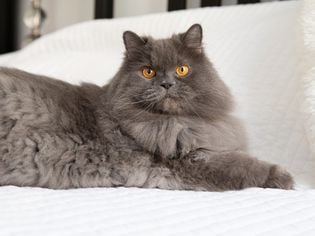
14 Facts About Persian Cats
Persian cats are, perhaps, best known for their flat faces, big eyes, and long, luxurious coats, bu
About FleaFree Feline
We are a premier digital platform committed to delivering high-quality content to our readers. Our mission is to provide accurate, reliable, and engaging information that adds value to our audience's daily lives.
Our team consists of experienced content creators and subject matter experts who uphold the highest standards of professionalism. In an era of information overload, we curate content with care, ensuring our users receive only the most relevant and trustworthy information.
Beyond just reporting facts, we focus on depth and context. Through expert analysis, comprehensive research, and clear presentation, we help our audience gain meaningful insights and make informed decisions.
We take pride in being a trusted information source for our growing community of readers. Our user-first approach means we continuously adapt to provide content that meets our audience's evolving needs and interests.
Innovation and excellence drive everything we do. We're committed to improving our platform and services to deliver the best possible experience for our users.

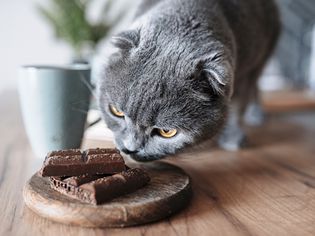
Comments on " Can Cats Eat Chocolate?" :